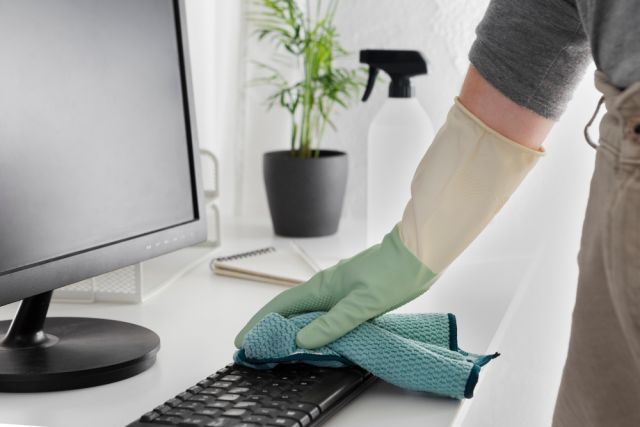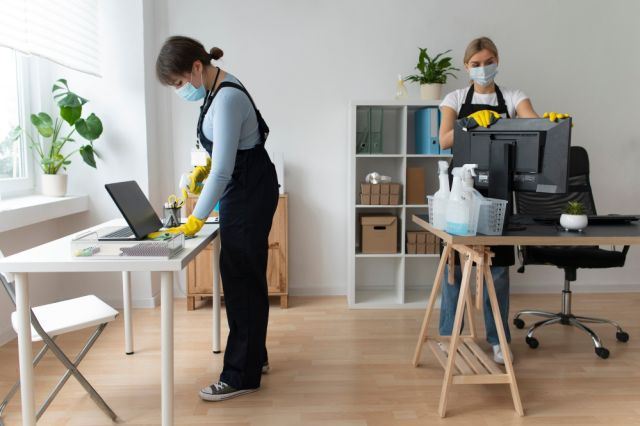How Your Cleaning Service Provider Can Support Customer Capacity for Higher NABERS Ratings

NABERS ratings not only help you achieve your Net Zero targets, but they can also drive financial growth and cost savings.
What is NABERS?
The National Australian Built Environment Rating System, or NABERS, measures a building’s carbon emissions, water usage, energy efficiency, waste management and indoor environment quality and then quantifies it all into an assessment of the building’s impact on the environment.
There are 6 stars to achieve. A facility with a single NABERS star is classified as ‘Making a Start’, whereas one with 6 stars is classified as ‘Market Leading’. These ratings are valid for twelve months, after which your building will be reassessed to see if it still meets the required criteria for your rating. The sustainability rating measures your building’s efficiency across four primary criteria:
- Water
- Energy
- Waste
- Indoor environment
NABERS ratings not only helps you achieve your Net Zero targets, but they can also drive financial growth and cost savings. This makes it lucrative for building owners to get their buildings NABERS certified.
How Facility Cleaning Services Can Help You Get Certification?
To achieve NABERS certification, it is essential to choose your service partners carefully. Not every waste management company, HVAC or maintenance company will adhere to the standards set out by NABERS. Similarly, not every facility cleaning service will use the right chemicals and equipment to meet NABERS standards. Here are some of the ways GJK Facility Services can help you get a higher NABERS rating:
Water
Buildings use up to 20-30% of the world’s available potable water.¹ This includes using water in restrooms, HVAC systems, gyms and pools, equipment like dishwashers and taps for cleaning or drinking purposes. A NABERS Water rating looks at the amount of water used and recycled within a building and the measures used to improve its water efficiency.
By using water-conserving machineries like water-efficient scrubbers or robotic scrubbers and microfibre flat mopping, your commercial cleaning provider can reduce water consumption within your building. Companies like GJK also train their staff in water-saving methods applicable to their jobs, which can all contribute towards attaining a higher NABERS rating.
Energy
The built environment is responsible for 40% of global energy consumption and 30% of total energy sector emissions.² These statistics will only rise with the growing world population, global warming and increased energy demands unless some changes are made.
Within the ‘Energy’ category of NABERS, buildings are assessed against their energy efficiency and operational energy use. Improving your energy efficiency can not only reduce your environmental impact but also directly impact your energy bills.
A commercial office cleaning partner like GJK can help reduce your building’s energy use by harnessing equipment with low energy outputs, solar or electric-powered vehicles and using cleaning methods that conserve energy wherever possible.
Waste
According to NABERS, in 2018-19, Australia alone generated an estimated 74.1 million tonnes of waste.³ This number is likely to multiply multifold when you consider all the countries in the world. NABERS Waste measures how well people in buildings separate waste into streams that can be recycled and diverted from landfill.
Your commercial cleaning partner can support you in this endeavour, first, by switching to cleaning products made with recyclable or reusable packaging, which results in less waste being generated. Then, your facility cleaning partner should work with waste partners that can manage viable, multiple waste streams and help implement them into buildings. Lastly, your cleaning partner can also implement waste monitoring systems – such as IoT waste tech – to help you identify waste areas that need improvement.
Indoor Environment (IE)
Although the effects of outdoor air pollution on our health are widely understood, very little attention is paid to indoor air quality (IAQ), despite the fact that Australians spend over 90% of their time indoors.4 Improving the Indoor Environment of your building involves looking at the indoor air quality, lighting quality, temperature and thermal control and acoustic quality of a building.
GJK can help improve IE by introducing ‘green cleaning ’ methods and chemical-free systems to ensure no Volatile Organic Compounds (VOCs) and other chemical pollutants enter the air. Furthermore, we can install IAQ monitoring and advanced air purification systems in your office or building. Moreover, GJK ensures all our equipment has HEPA filtration systems to ensure your tenants are always breathing clean, unpolluted air. The Base Building Indoor Environment rating is designed for building owners and managers who generally control and maintain the thermal services, air systems and building cleaning services.
Choosing the right service partners is key to achieving higher NABERS ratings. The next time you start a new partnership with a commercial office cleaning service, consider their ability to monitor and measure results and their expertise in sustainable waste management, green cleaning and energy conservation methods.
.
References:
1. NABERS Water I National Australian Built Environment Rating System (nabers.gov.au)
2. Green Star – Performance: Summary of Categories and Credits (gbca.org.au)
3. NABERS Waste I National Australian Built Environment Rating System (nabers.gov.au)
4. Indoor Air – Australian Government Department of Climate Change, Energy, the Environment and Water




